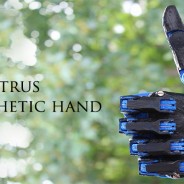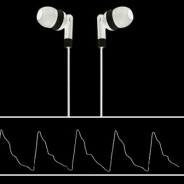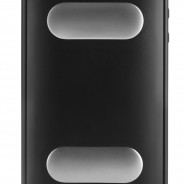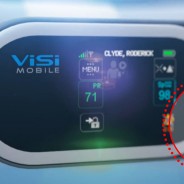News
Google has its eye on measuring glucose
Google, the company responsible for finding most of what anyone looks for on the internet, has set it’s eyes on a new target: diabetes. The company has just announced it’s newest project, a smart contact lens, which can analyse the biochemistry of your tears to measure blood glucose levels. By ameliorating the inconvenience and pain of using finger prick testing, Google hopes to bolster regular checks and aid strict blood glucose control. The project founders, Brian Otis & Babak Parvis, have taken to the official Google blog to say...
read moreSurvey Questions Functionality of mHealth Apps
Despite the progress that has been made in the field of mHealth, a recent survey of the health related apps that are currently on offer in the iTunes store has suggested that many of them provide only limited functionality, and that even then they generally serve only very limited patient populations. Fulfilling the optimism about the future of mHealth may depend on overcoming these limitations by increasing both the functionality of mHealth apps and the range of patients and conditions that are covered. Assessing mHealth Apps Despite the...
read moreAs Americans Adopt Mobile Health Tools, Professionals Must Evaluate the Consequences
Mobile devices have become ubiquitous in modern American society. Although some psychologists worry that too much screen time can be bad for health, mobile devices can actually be a force used for good in the realm of healthy living. Popular Self-monitoring Tools According to a survey of U.S. consumers by Royal Philips Electronics, one in 10 Americans believe that Web-based health information has prevented them from dying or becoming severely incapacitated. For example, the WebMD app for Android has been downloaded more than 5 million times,...
read moreDistributed computing: allowing you to save the world while you sleep
Computer time has long been considered an essential resource in conducting in silico simulations, either replacing or complementing traditional experiments. So what’s a researcher to do when supercomputer time costs millions of dollars and the supercomputers themselves cost billions? Sadly, not everybody has a spare computing behemoth lying around in their back yard to loan out to starving researchers. In recent years, thanks to the power of the Internet, the idea of harvesting unused CPU cycles from volunteer computers has become not...
read moreDigging deep for digital digits
Crowd-sourcing has become quite popular method of raising capital for up and coming startups and the mHealth sector is no stranger to the concept, with a project recently having reached funds on Indiegogo for Dextrus: the open source robotic prosthetic hand. The campaign reached its $64000 goal in just over a month with sponsors donating around an additional $8000 in excess. The company has pledged to use the funds to create a viable prosthetic arm that can be sold for under $1000. It hopes to publish the designs of the prosthetic as an...
read moreVolume 2 Issue 3
The Editorial Board at the Journal of Mobile Technology in Medicine is proud to present Volume 2, Issue 3, published in November 2013. Mobile technology in Medicine is a rapidly developing area, and we hope to continue accelerating research in the field. We look forward to your submissions for Issue 4. Journal of Mobile Technology Volume 2, Issue 3.PDF Editorial 001 An Update on mHealth Regulation in the United States B.A.B. Blumenfeld, W.A. Garvin 004 The utility of mHealth in Medical Imaging C. Perera, R. Chakrabarti Original...
read moreEarbuds to measure racing hearts
Your run-of-the-mill earphones could be the latest innovation in mobile health technology. In the past, music has gotten pulses racing, now with health, it seems we can measure how much by. The Kaiteki Institute in Japan and Bifrostec has been developing technology to turn earphones into pulse rate monitors via special software algorithms. This technology works by utilising the pressure change in the enclosed ear caused by pulsating arteries when earphones are worn. This pressure change occurs at roughly 1Hz and can be detected by earbuds...
read moreDevices and Apps Which Already Have FDA Approval
The FDA guidelines which were recently published have required FDA approval for certain types of apps and mobile attachments which are essentially designed to function as medical devices which would have otherwise required FDA clerance. Here are some FDA approved programs which are a great model for future devices/apps. Alivecor Heart Monitor Once upon a time, electrocadiogram (ECG) monitors were a rare luxury that only the most prestigious clinics offered. Today, doctors depend on this technology to monitor heart health, and the recently...
read moreSotera clears FDA, Wireless BP measurements on the way
Sotera Wireless recently announced that one of the company’s key products, the continuous non-invasive blood pressure monitor (cNIBP), has cleared the FDA regulatory process. This means that continuous, beat-to-beat, cuff and invasive catheter less blood pressure measurements are one step closer to hitting hospital floors. This technology is part of the ViSi Mobile patient monitoring system that is being developed by the San Diego based company. Once released, the wrist worn device will allow for the continuous measurement of all core...
read moreAirStrip enables a consistent cross-platform mHealth experience
The stratospheric rise of smartphones has also brought with it several dominant platforms all vying for users, each with it’s unique features, but offering essentially the same core functionality. Many apps and services have now standardised their apps or features across multiple platforms, including AirStrip, which became the first mHealth company to support the yet unreleased Microsoft Windows 8.1 OS. “Mobility is no longer defined as just smartphones and tablets. This release of AirStrip ONE Cardiology for Windows 8.1 supports our...
read more








